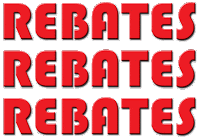Targeting: Science or Passing Thought?
Skill Three Targeting
One of the issues that I faced as a young sales person
revolved around this simple statement. All
customers are not created equal. As a guy who grew up believing in fairness,
equality and all the rest of the American Creed, this was hard. I wanted to treat every single person who
ever purchased one of my products with the same level of support and the same
level of attention. The little guys
loved me and I developed a loyal following – but my sales didn’t grow.
It was only after I came to realize not everyone had the
ability, the volume and the potential to help me reach my own goals that I
started to progress professionally. My
first efforts revolved around size of account, and this was a good start. However, it’s more complex than just
size. When we match our products and
services to the customer most likely gain high value from what we do, we begin
the trek to sales success. When we add
in the dynamic of appreciation of our value – we move even farther
forward. I call this targeting.
Later on I discovered research indicating world class “targeters”
are 47% more effective in reaching their financial goals than their peers. Unfortunately, this thought is lost on many
in distributor-land. In sales meeting
after sales meeting, strategy is discussed and “targets” proposed but no
precise companywide process for targeting exists. During down turns in economy those with well
thought out targeting processes will prevail.
Let’s establish touch points for measuring targeting
skills. Again, I defer to my favorite
1-10 based scale. Here are the measures
I recommend:
1 – You have thought about how you sell and recognize some
customers can buy more.
3 - There is little difference between a target and key
account. Typically you use the same
three or four large accounts as your target for every product.
5 – You have applied some segmentation to your targeting
process. You have targets broken down
based on account size and account type (OEM, User, and Contractor).
7 – You are looking at what customers might most easily be
approached within your segmentation.
10 – Targeting is a science.
You have long term targets identified for strategic programs or
processes and short term targets identified to kick-start the sale of new
products. Those around you understand
your process and have a common vocabulary (ex. product level target,
salesperson level target).
Remember the story of the hare and the tortoise? Remember how the old rabbit gave the turtle
dude a little head start? Well, I don’t
think a 47% head start can be ignored – it’s just too big a number.
As I write this, I am concluding a two year research into the targeting methods used in some of the most successful organizations. A book is just a short time away. Drop me a line and I will share the introduction with you.
As I write this, I am concluding a two year research into the targeting methods used in some of the most successful organizations. A book is just a short time away. Drop me a line and I will share the introduction with you.




Comments